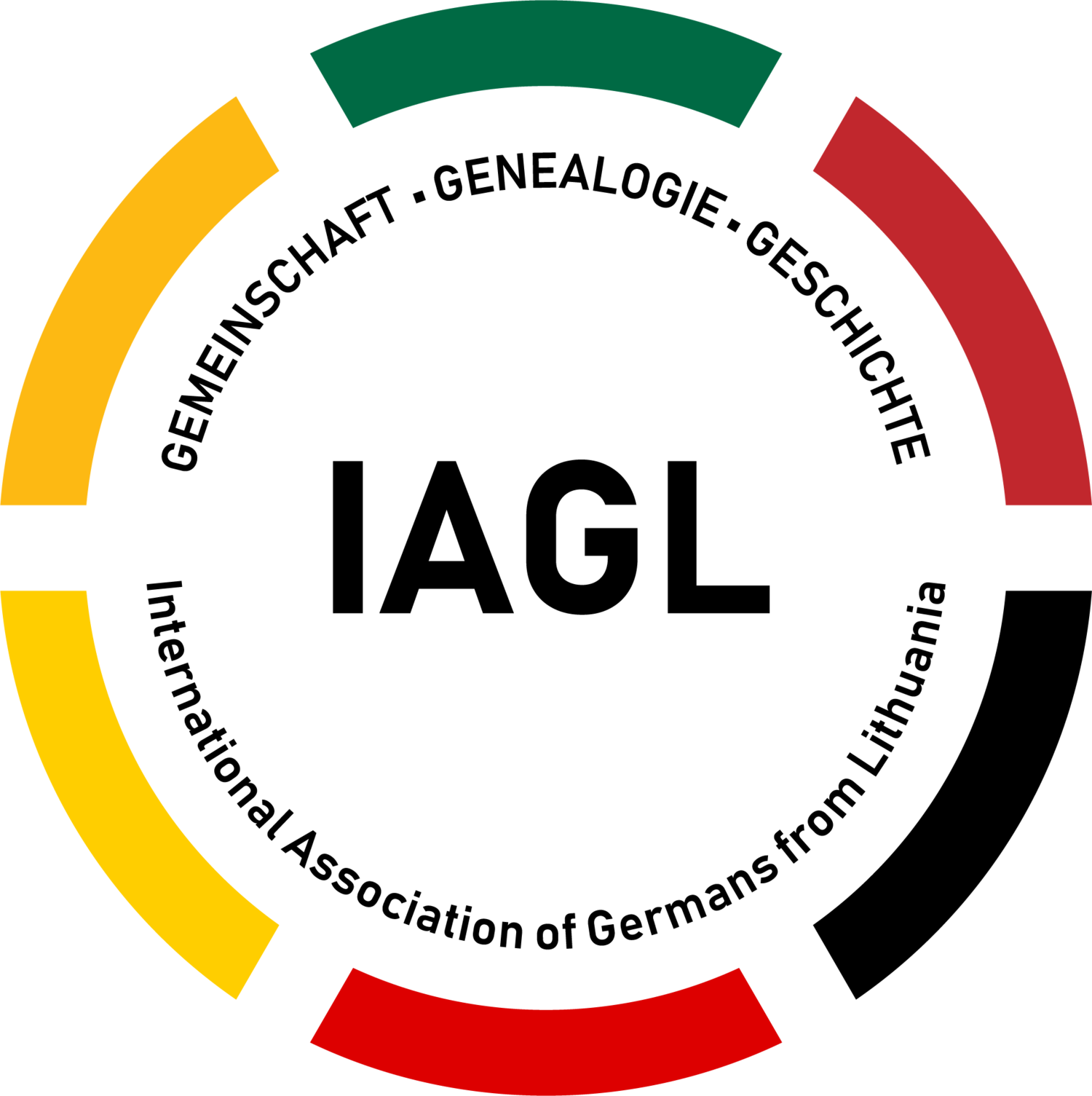Germans from Lithuania: A Basic Overview for Beginners
If you’ve recently discovered that you have ethnic German ancestors who lived in Lithuania you’re in for both a treat and some disappointment. If you had a similar experience to me when I first started out 12 years ago, you’re probably quite confused. “Are these ancestors of mine Lithuanian or German?” “What were they doing in Lithuania?” “Wait, Lithuania was once part of Russia? What does that mean!? So they were Russian?” These are all great questions, and untangling the web of history can be challenging at first.
The good news is there are some amazing resources out there to help you learn more about your ancestors and progress your family history research. The bad news is, there are some roadblocks to this research that are simply too tall and too thick to ever get over. This blog post is meant to give you a very brief overview of these Germans from Lithuania--or as we say in German Deutsche aus Litauen--and some tips to start your research and provide context to your family’s story.
The term Deutsche aus Litauen actually refers to people from a very specific geographic region.
Although there were ethnic Germans living throughout many places in Lithuania (such as the former Memelland, today called the Klaipėda region) the Deutsche aus Litauen mainly refers to the ethnic Germans living along the area surrounding the southwest East Prussian-Lithuanian border. This includes areas in and around the towns of Vilkaviškis, Vištytiš, Virbalis, Kalvarija, Marijampolė, Seirijai, Šakiai, Pilviškiai, Prienai, Kudirkos Naumiestis, Kybartai, Garliava, Sudargas and others. Those living in the former Memelland are generally referred to as ‘Prussian Lithuanians.’
Map representing the area of concentration where most Deutsche aus Litauen lived in southwest Lithuania
Deutsche aus Litauen families mostly originated in East Prussia
The word Deutsche literally translates to German in English but saying a person is German isn’t really specific enough, considering the changing borders of Germany over the years. Specifically, the vast majority of the Deutsche aus Litauen find their ancestral roots in East Prussia--many of them coming from villages just over the border from Lithuania such as Stallupönen, Pillupönen, Galkehmen, Göritten, etc. Although there were small numbers of Germans who came from other parts of the German Reich, it’s fairly safe to assume that if you have ancestors who were Deutsche aus Litauen, they were very likely from somewhere in East Prussia originally.
COAT OF ARMS OF EAST PRUSSIA (OSTPREUSSEN) VIA WIKIPEDIA
Many of the Deutsche aus Litauen were also descendants of the Salzburger Exulanten
The Salzburger Exulanten (also referred to as the Salzburger Protestants ) were a group of about 30,000 protestants who originally lived in the Pongau region of Salzburg, and were expelled in 1731/32 because of their protestant beliefs. They were invited by the Prussian King to settle in East Prussia and many of them (including my own ancestors) settled in the area of Gumbinnen--just on the other side of the Lithuanian border. Many Deutsche aus Litauen with last names ending in -er for example, were descendants of this Salzburger group.
RECEPTION OF THE SALZBURG PROTESTANTS BY KING FREDERICK WILLIAM I IN BERLIN AT THE LEIPZIG GATE ON APRIL 30, 1732 VIA WIKIPEDIA COMMONS
They started to settle in East Prussia around 1795
In 1795, the area of Lithuania (then part of the Russian Empire) near the East Prussian border was partitioned and given to the Prussian King. This area was then renamed Neuostpreußen or New East Prussia. The numbers of East Prussians who settled Neuostpreußen were fairly small and the territory was given back to Russia in 1807 after Napoleon defeated the Prussian army. The main waves of immigration into Lithuania by East Prussians started in the early 1820’s, the mid-to-late 1840’s until about the late 1860’s. However, East Prussians continued to settle in Lithuania well into the early 20th century--though not in large numbers.
Economic reasons were the likely the cause for leaving East Prussia
Most sources list economic opportunity as the driver for East Prussians to settle across the border in Lithuania. Particularly taxes, which disproportionally affected the lower classes. Additionally, those who were looking to set up shop in a trade (such as blacksmiths, cobblers, etc.,) wouldn’t have to follow age-old guild and journeymen regulations in Russia (Lithuania.) It has also been noted that the land in Lithuania was supposedly less developed, not as over farmed—and of course cheaper—than in East Prussia, giving young farmers in particular a better opportunity.
Most spoke more than one language
Due to their geographic location, many Deutsche aus Litauen were educated in Russian, Polish, and/or Lithuanian depending on when they were in school, and attended German classes separately as part of their religious education at church, or were taught German at home. It has also been reported that many could understand and speak Yiddish, not only because the language has similarities to German, but also because this area was home to a large Jewish population until WWII. Like many East Prussians, Deutsche aus Litauen often spoke Low German (called Plattdeutsch or simply Platt) as opposed to High German (Hochdeutsch.)
Many considered Lithuania their Heimat
While their culture was uniquely East Prussian (mixed with influences from Russia, Poland, and Lithuania) many did refer to Lithuania as their Heimat or Vaterland. This was especially true for those who grew up during the time of Lithuanian independence. Even in my own family, cultural identity seems to have changed with the generations: those born during Lithuania’s independence (1918) tended to identify as Lithuanian first and German second--while the younger generation born during WWII, tended to identify as being German first and Lithuanian second.
Mixed marriages were very common–your DNA holds the clues
While it was rare for the Deutsche aus Litauen to marry outside of their religion (i.e. Catholic or Jewish), there was (and still is) a small population (compared with the overall population of Lithuania) of ethnic Lithuanians who were also Evangelical Lutherans. Many Deutsche aus Litauen families married into ethnic Lithuanian, Polish, and Russian families, meaning direct descendants of Deutsche aus Litauen ancestors will often find that their DNA tests come back with Baltic, Eastern European, and Russian markers, in addition to Germanic Europe.
The Deutsche aus Litauen no longer exist in Lithuania today
Most of the Germans in Lithuania either relocated as a result of the Nazi resettlement operation in 1941/42, or fled after the war ended. As a result of the horrific crimes committed by the Third Reich, Germans were no longer welcomed to live in either Lithuania or East Prussia and most resettled throughout East and West Germany, or left Europe entirely. There were a small number of children who were abandoned as a result of the fleeing and did end up in Lithuania--they are called the Wolf Children.
Church books in Lithuania are one of the most important sources for genealogical research
The Deutsche aus Litauen were almost all Evangelical Lutherans. As a result, the church records of the Evangelical Lutheran parishes in this Lithuanian border region are vital to doing Genealogical research on your ancestors. You’ll find important information in baptismal, marriage, death, and confirmation records that will help you advance your research.
Find a translator--many Lutheran records in Lithuania were written in Polish, Russian, or Lithuanian
Unlike in Prussia where a civil registry was required in cities starting in 1874, Lithuania (ruled by Russia) did not have such a system. Therefore, records of baptism, marriage, and deaths kept by the church were considered not just ecclesiastical records, but also official government documents. Before 1867, you’ll find those records to be in Polish, as was required by law. Starting in 1867, records were then required be in Russian Cyrillic. In 1918 when Lithuania gained independence, many records will start to be recorded in Lithuanian. However, confirmation records were usually in German, as these records were not required to be kept by law but were rather a church requirement.
A BIRTH RECORD FROM THE EVANG. LUTH. CHURCH IN KALWARIA, LITHUANIA CIRCA 1883. WRITTEN IN RUSSIAN CYRILLIC AS WAS REQUIRED BY LAW. VIA GADD.HOME.NET.PL
Many church records in Lithuania were lost or destroyed
One of the most heartbreaking and disappointing parts of doing genealogical research in this region, is the loss of church records. Due to the fact that both world wars were fought in many of these villages, churches, archives, and government buildings often fell victim to bombings, fires, or simple deliberate destruction. As a result, there are gaps of missing church records in almost every parish in this region. The Lutheran church records of Vištytiš are particularly disappointing, as all that remains of births and marriages from this large parish between 1844 and the 1880’s is merely an index of names with dates.
EWZ records can help to fill in some gaps
In 1941, ethnic Germans living in Lithuania began to leave Lithuania and relocate in the newly formed Third Reich as part of a resettlement program started by the Nazis. The records created during this relocation by the EWZ (a Nazi organization) can often contain important genealogical information including names and birth places of parents, children, marriage dates, etc., You can read more about the EWZ records and a brief history of the relocation here.
Old maps are great resources
Just to give you an example, the town of Vištytiš in Lithuania can sometimes be written in Polish as Wisztyniec or in German as Wischtyten, Wystiten, or Wischtiten, in Yiddish as Vishtinets and, of course Vištytiš in Lithuanian. When looking for towns in Lithuania, you will want to look at older maps to see if you can find it especially considering the name of the town you’ve found on a document may or may not be spelled accurately. Checking Polish, German, or even Russian maps may also help. Two great websites for this are Mapy WIG and LithuanianMaps.com
If you’re looking for a town in East Prussia, Meyerz Gazetteer will be your new best friend. If you search for a town but get no results, be sure to click the “sounds like” search link to do a phonetic search.
Most headstones are no longer standing
There were numerous German Lutheran Cemeteries throughout the Lithuanian-East Prussian border region which once held the graves and tombstones of countless people. Unfortunately, most of these cemeteries fell into disrepair after the German Lutherans in Lithuania left at the end of WWII. Apparently, some headstones from the German Lutheran Cemeteries were taken and used as building material by the red army. This was a common occurrence in East Prussia as well. Death records that do exist in the church books generally do not indicate plot numbers but may indicate which cemetery the individual was buried in.
Annaberger-Annalen is in German but well worth translating
The Annaberger-Annalen is an academic publication released once a year, that features academic articles on Lithuanian-German relations. The publication is online and via PDF completely free going back to their first issue published in 1993. I cannot stress enough how amazing many of these articles are.
Books worth reading for historical context
A good Genealogist also understand the importance of providing historical context to his or her research. In other words: if you’re not going to the library and reading books to compliment your research, shame on you! Here’s a list of books worth checking out that indirectly or directly include Deutsche aus Litauen:
Die Detuschen in Litauen 1927 by Rudolf Heberle (German)
Die Deutschen in Litauen 1959 by Gustav Wagner (German) and available online for free here.
Himmler’s Auxiliaries: The Volksdeutsche Mittelstelle and the German National Minorities of Europe, 1933-1945 1993 by Valdis O. Lumans (English)
The Salzburg Transaction: Expulsion and Redemption in Eighteenth-Century Germany 1992 by Mack Walker (English; focused specifically on the Salzburger Protestants)
Iron Kingdom: The Rise and Downfall of Prussia, 1600-1947 2009 by Christopher Clark (English)
The Germans 1991 by Gordon A. Craig (English)





